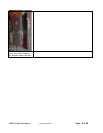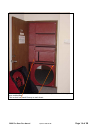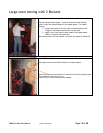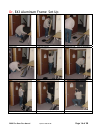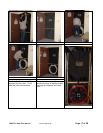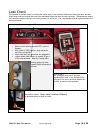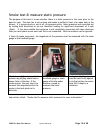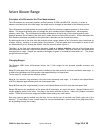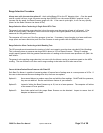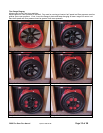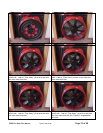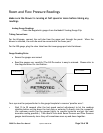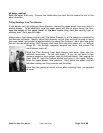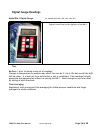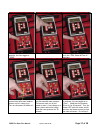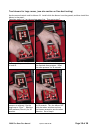2000 Fire Door-Fan Manual updated 2002-05-28 Page 21 of 58
Range Selection Procedure
Always start with the restrictor plate off - that's called Range 22 for the 22" diameter inlet. Give the speed
control a quick half turn to get the motor moving then QUICKLY turn the control DOWN if required. As you
increase the fan speed, the Room Pressure gauge will rise. If the room is quite tight, it will rise very quickly.
(Never let the Room Pressure rise above 60 Pa.)
Range Selection When Conducting A Single Point NFPA Test:
The general rule regarding range selection is that the motor must be running at least at half speed. If the
motor is running slowly, change to a more restrictive range so the highest possible flow pressure can be
measured for the greatest accuracy.
The computer will warn you if the flow pressure is too low. If necessary, keep changing to a lower and lower
range (more and more restrictive) until the Flow Pressure is much greater than the Room Pressure.
Range Selection When Conducting a Multi-Reading Test:
The ISO procedure and sometimes the testing of relief vent capacity must be done using Multi-Point Readings.
This is normally done at pressures starting at 60 Pa down to 10 Pa of Room Pressure. Taking 12 readings
roughly equally spaced with the greatest concentration of readings at the lowest room pressures will yield t he
best results.
The general rule regarding range selection is to start with the blower running at maximum speed on the 60 Pa
reading. The new software will allow multi-range readings to be taken but this takes more time.
Cannot Achieve Desired Room Pressure with Plate Off
Each Door Fan blower is capable of measuring about 10 square feet of leakage area at a room pressure of 10 Pa. If
the room to be measured has more leakage than this, there are two options:
Option #1: Use a second blower to produce more flow and add the flow readings. Do NOT add flow pressures,
they are not additive! Use the multi-blower feature of your software.
Option #2: Instead of taking the Room Pressure up to 10, test at a lower pressure. The computer will advise
of the amount of error possible.
Option #3: Have leaks sealed until the proper Room Pressure can be obtained. Inspect to ensure that all
dampers and doors are closed.



